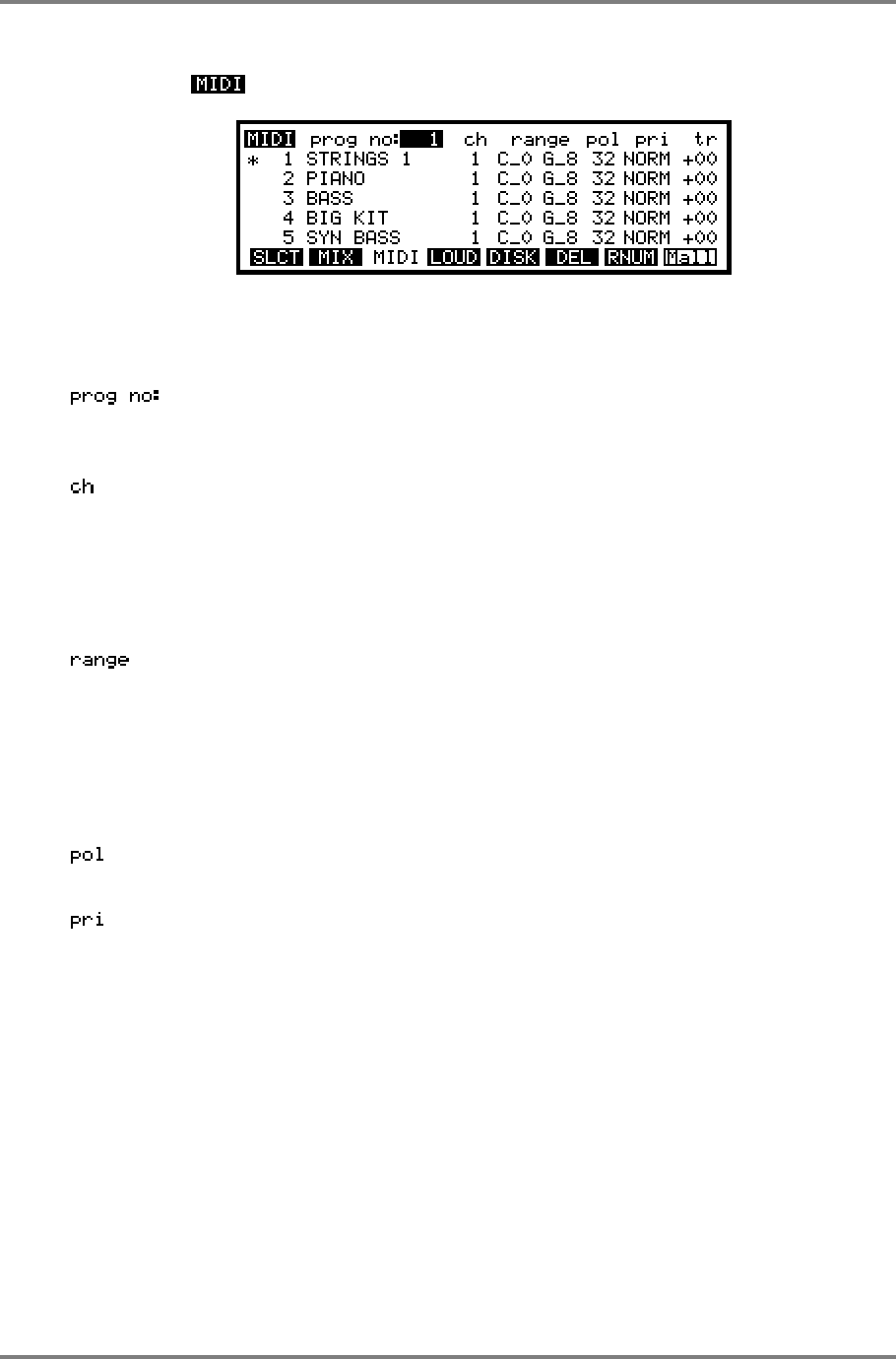
SINGLE MODE
Page 32 CD3000XL OperatorÕs Manual
SETTING PROGRAMS’ MIDI PARAMETERS
Pressing F3 - - will display the following screen:
This could be regarded as a ‘MIDI mixer’ as it follows a similar layout to the MIX page described
above. This page allows you to set various MIDI parameters for each program. The parameters
are:
This shows the number of the program 1-128 selected in the main SINGLE
page although you may select another program or group of programs in this
field.
This allows you to set the MIDI channel for any program and the range is OM
(omni) through 1-16. This parameter allows you to layer programs together by
setting two or more programs to the same program number and setting their
MIDI channels the same in this field. It also allows you to set up sophisticated
multi-timbral configurations (i.e. set several programs to the same program
number and assign different MIDI channels to each program). You may also
layer two or more programs within a multi-timbral configuration of course.
When two programs are given the same program number, it is possible to set
up keyboard splits by setting the note range of the programs. This parameter
ignores each programs keygroup ranges and simply imposes a range on the
whole program. In this way, you can quickly set up very complex keyboard
splits and layers without having to concern yourself with the intricacies of
setting keygroups within a program itself. Please note that this parameter has
no effect on single programs, it is only when two or more programs have the
same program number that it is effective.
This is an abbreviation of POLYPHONY and allows you to limit the polyphony
of a program.
This is an abbreviation of PRIORITY and allows you to set how notes will be
‘stolen’ by other programs if the 32 voice polyphony is exceeded. There are
four settings: LOW, NORM, HIGH and HOLD. If the program is set to LOW
priority, then notes from this program will be stolen first. If set to HIGH, then
notes from other programs with lower priority will be stolen first before they are
stolen from this program. NORM is, of course, normal priority and sets standard
dynamic voice allocation and note stealing will take place with no particular
priority. If a program’s priority is set to HOLD, then notes can only be stolen
from this program by the same program.
If you are playing a complex piece of music using many programs in a multi-
timbral configuration, it is a good idea to set important programs to HIGH or
HOLD and less important, background programs to LOW. If the piece of music
is not overly complicated and polyphony is not going to be exceeded, you may
prefer just to leave the priority at the default setting of NORM.


















